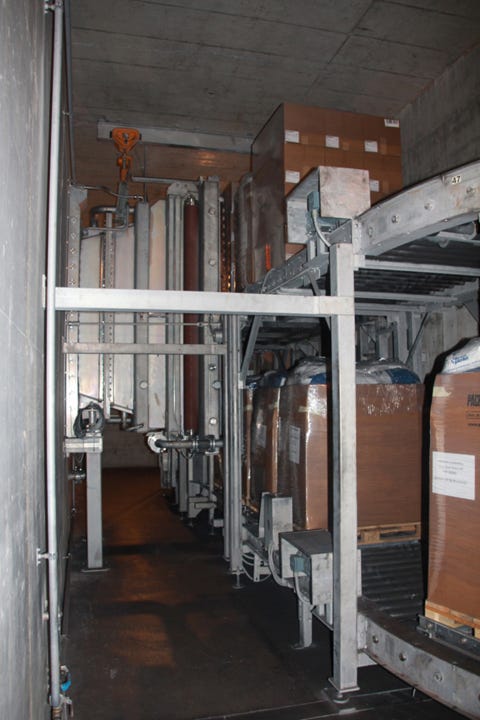FTC Fails to Block $2B Steris-Synergy Merger
September 25, 2015
A U.S. federal judge's opinion suggests that x-ray sterilization might not be the next big thing for medical device sterilization--at least not for a while.
|
Synergy Health's industrial x-ray sterilization facility in Daniken, Switzerland, is able to process up to 80,000 pallets annually. (Image courtesy of Synergy) |
Chris Newmarker
A U.S. District Court judge in Cleveland has denied the Federal Trade Commission's request for a preliminary injunction to halt Steris' nearly $2 billion acquisition of medical device sterilization rival Synergy.
Judge Dan Polster's ruling on Thursday cleared the way for Steris and Synergy shareholder votes on October 2 to approve the inversion deal, which would move Steris' official headquarters from Ohio to Synergy's home in the United Kingdom. (The FTC could still appeal.)
"We will work to expeditiously close the acquisition of Synergy Health," Steris' president and CEO Walt Rosebrough said in a news release.
Besides dealing the FTC a rare setback in the courts, Polster's opinion also casts doubt on whether x-ray sterilization is truly ready for prime time in the U.S. medical device market.
The major thrust of the FTC's argument was that the merger, announced in October 2014, provided a way for Steris to prevent Synergy from bringing x-ray sterilization of medical devices to the United States--challenging the status quo in the process.
Sterigenics International, Steris, and Synergy are the first-, second-, and third-largest sterilization companies in the world, according to Polster. But Sterigenics and Steris provide all the gamma radiation sterilization services for finished medical devices inside the United States, accounting for 85% of all U.S. contract sterilization services.
Synergy provides e-beam sterilization services inside the U.S., though it operates many gamma facilities elsewhere. The British company was looking for a way to expand in the U.S. Operating the only commercial-scale x-ray sterilization facility in the world--in Daniken, Switzerland--Synergy officials thought they could gain an edge by bringing x-ray sterilization to the U.S.
Synergy officials listed a number of x-ray sterilization advantages in an article they wrote for Qmed's sister publication MD+Di in early 2014: better penetration than gamma or e-beam; less effects on materials, especially polymers; shorter processing times; and environmental advantages.
But Syergy's x-ray strategy was easier said than done, according to Polster. Officials at medical device makers including J&J, Community Tissue, BD, Stryker, and Bayer signed letters of interest in x-ray sterilization, but their interest remained "academic"--with no one actually committing to use it. At the same time, the manufacturer of the x-ray sterilization equipment--IBA--decided it would need to design and build a new model of sterilization machine for Synergy, which would cost considerably more than previously estimated.
The economics worked against x-ray because sterilization only makes up 3% of a medical device's cost, Polster explains.
"This means that even if Synergy could promise a customer a 30% price savings over gamma sterilization for a product, the conversion would only reduce the product's cost by 1%," Polster says. "On the other side of the ledger was the significant cost of conversion, estimated to be $250,000 to $500,000 per product. The product would need to be tested, then the conversion would need to be approved by the FDA and the foreign counterpart in any foreign country where the product would be sold, then the site would have to be qualified; and then product would have to be put through the facility for validation."
Polster came to the conclusion that Synergy officials decided to discontinue the U.S. x-ray project in February 2015 not because of the proposed merger with Steris, but because the "business model failed every one of the metrics Synergy uses to rank capital investments."
Learn more about cutting-edge medical devices at MD&M Philadelphia, October 7-8. |
Chris Newmarker is senior editor of Qmed and MPMN. Follow him on Twitter at @newmarker.
Like what you're reading? Subscribe to our daily e-newsletter.
About the Author(s)
You May Also Like


.png?width=300&auto=webp&quality=80&disable=upscale)
